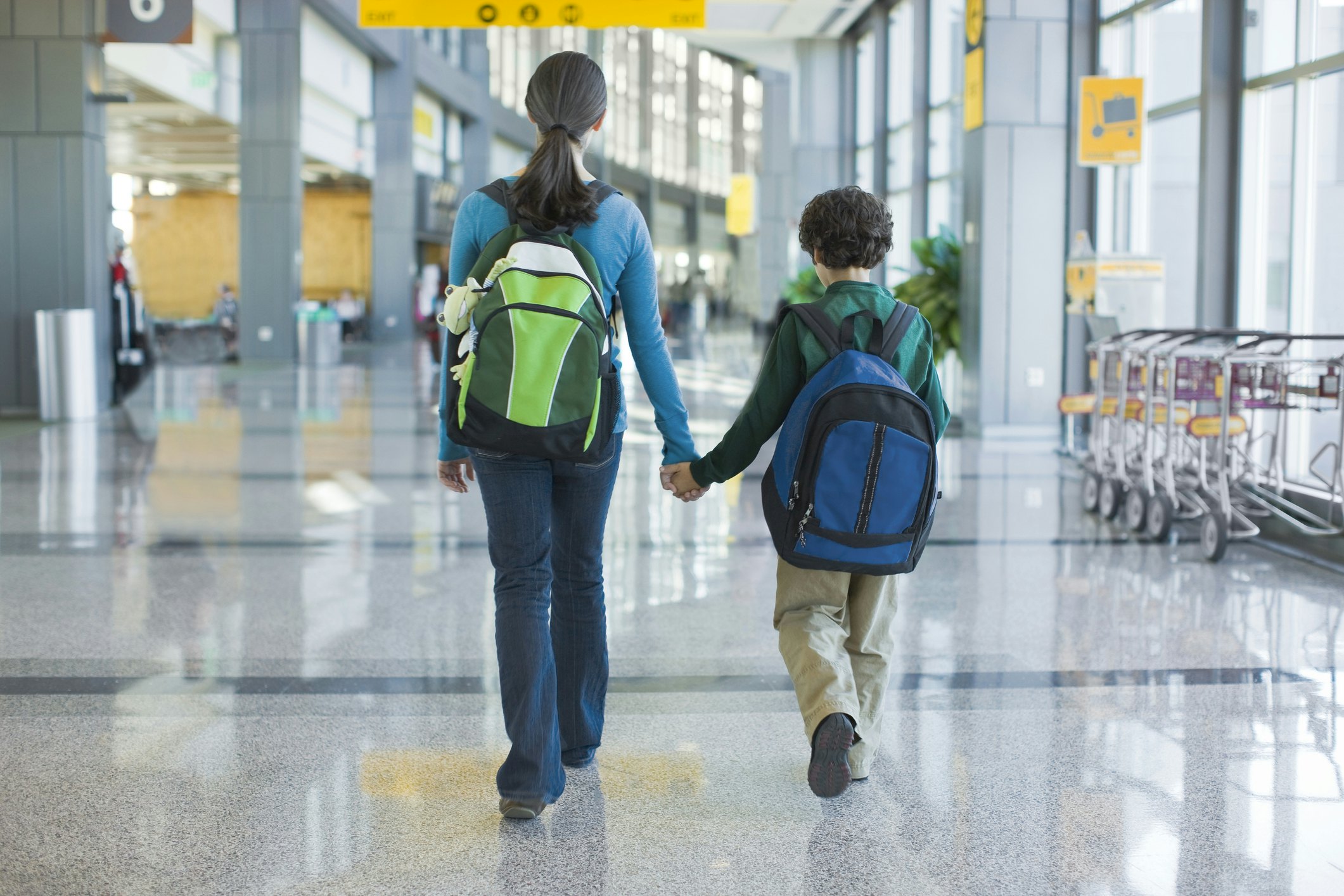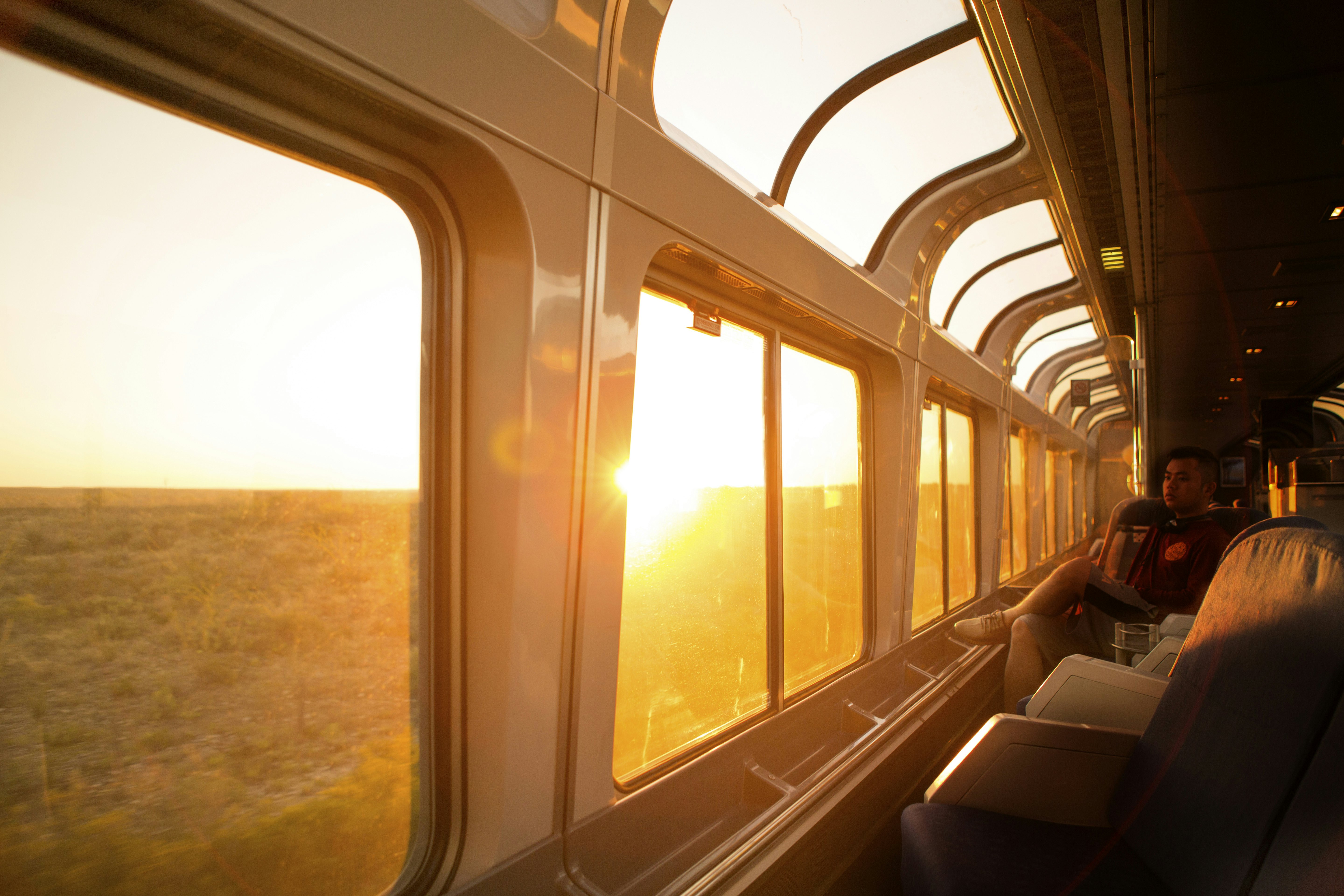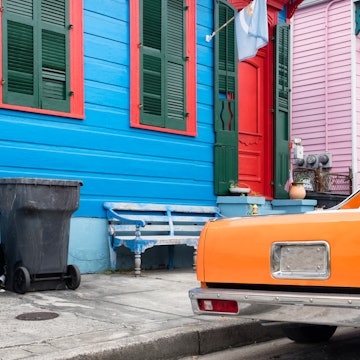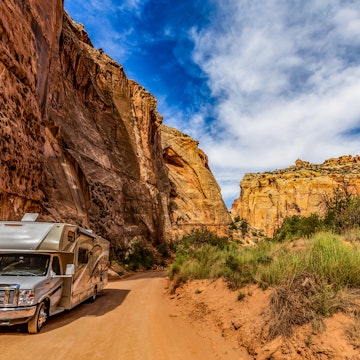

Hiring your own car will give you lots of flexibility in Texas © Jamie Kingham / Getty Images
Texas, the second-largest state in the USA, is a sprawling land where remote mountains, kitschy towns, and ginormous metroplexes are connected by a vast system of highways, railways and air routes.
The sheer scale of Texas means that getting to and from different destinations is time consuming, no matter which forms of transportation you choose. However, with proper planning, you can travel more efficiently and quickly throughout the Lone Star State. Here’s everything you need to know about getting around in Texas.
Hire your own wheels for the open road
Driving is by far the most common method of travel in Texas. You’d be hard-pressed to get around any of the major cities without a car, and some remote destinations, like Big Bend National Park, are practically inaccessible without private transport. Driving also allows you to easily make stops at roadside attractions – of which there are many in Texas – and experience the state’s scenic landscape up close and personal. It is also by far the most convenient form of travel for families.
Prepare for three-to-five-hour drives between major cities like Dallas, Austin, and Houston. Road trips to cities like El Paso or South Padre Island can be much longer. Some claim that Texas’ highway systems are confusing, and within major cities (which are also usually busy with traffic) that is certainly the case. To prevent getting lost, use an online map for navigation.
Gas currently runs at around $3.50 per gallon, although if you have an electric vehicle, you’ll be glad to know that Texas ranks number two in the nation for charging access with almost 5000 EV charging stations.
Bikers are drawn to Texas’ scenic routes, especially those in Hill Country. The state does not require riders to wear helmets if they are over 21 but wearing one is always advisable for safety reasons. Lane splitting (riding a bike between stationary or slow-moving traffic) is illegal in Texas, so stay in one lane. It’s worth noting that with high temperatures in the summer, it can get toasty riding a motorcycle on the highway between May and early October.
A local’s tips for driving across the state
Texas has a wide range of toll roads and the higher speed limits make them a popular option. Unlike other states, you can’t stop and throw a handful of coins into a toll-booth basket or pay with a card to use these roads. Instead, cameras scan for a toll tag from TxTag.org or a license plate. The TxTag provides access to all toll roads in Texas, as well as those in Oklahoma and Kansas. You can also use the toll tag to pay for entry at Texas airports and/or airport parking.
If your rental car or private vehicle lacks a toll tag and you take a toll road, expect a ticket to arrive at your door, sometimes months later. These tickets can result in surprisingly high fees. To steer clear of toll roads, you’ll need to specifically mark this in your online navigation tool.

Flights can save time if you're in a hurry
As the second-largest state in the US, in-state domestic flights can make traveling within Texas much easier. It doesn’t hurt that many of Texas’ biggest cities are hubs for major airlines. American Airlines has its primary hub at Dallas-Fort Worth International Airport, while Southwest Airlines’ primary hub can be found at Dallas Love Field. Houston International Airport is a hub for United Airlines.
Southwest Airlines and American Airlines (and their American Eagle subsidiary) dominate the skies in Texas, and as a result, you’ll most likely find the best deals with these two airlines.
While flying is often the quickest way to cross the state, planes lack the soul and atmosphere of a road (or rail) trip through Texas’ countryside. Flying is, of course, also a lot worse for the environment.
A local’s tips for flying within Texas
Dallas-Fort Worth International Airport and Houston International Airport are huge facilities that see a lot of foot traffic, which can cause long lines at ticket counters and security. If you’re flying in or out of Dallas or Houston to another city in Texas, you may want to bypass these hectic hubs in favor of smaller airports within city limits, like Dallas Love Field, in Dallas, and William P. Hobby Airport, in Houston.

Enjoy scenic views from a train carriage
Train travel isn’t the most popular form of travel in Texas, but it can take away the stress of driving and offer up-close scenic views that you can't get by flying. There are 19 Amtrak stations in the state, along three different routes: the Heartland Flyer (connecting Gainesville and Fort Worth), Sunset Limited (connecting Houston and El Paso), and Texas Eagle (connecting Dallas and El Paso). Train travel is slightly slower than driving, but not much so – it depends on your route and connections.
The biggest drawback to train travel in Texas is the cost and the low number of trains that run per day or week. Some routes in Texas offer one train a day, while others only see three trains per week, meaning this form of transport requires a certain amount of planning in advance.
Take the bus to stretch your budget
Buses are the most affordable method of travel in Texas. For instance, a one-way trip from Dallas to Austin on a Greyhound bus is only $35. Routes are extensive among large, small, and remote cities. Many buses come with wi-fi and have their own bathrooms.
Greyhound and Megabus, the two most popular bus providers in Texas, don’t have the most stellar reviews. Stations aren’t always in the safest areas of town and reports of breakdowns occur. That’s why some people opt to pay more for Vonlane, a luxury motor coach service with routes between Dallas, Houston, Austin, Fort Worth, and San Antonio.
Vonlane’s bus routes are cheaper than flights, and they offer a lot more amenities than standard coaches, such as plush recliners, free snacks and beverages, wi-fi, and TVs. Although Vonlane is marketed to business travelers, it’s a comfortable and convenient option that any traveler might opt to use.

Public transport is often free in cities
Each city has its own form of public transportation that includes everything from buses to metro rails. Public transportation within Texan cities is, on the whole, very affordable, and sometimes even free. For instance, Dallas has a free trolley that connects the neighborhoods of Uptown and Downtown.
Unfortunately, public transportation in Texas cities is not as extensive or efficient as in other cities around the US. It will most likely take you twice as long to get somewhere on public transport as it would by car. For some, it doesn’t seem worth it to take a metro line or a bus only to have to drive or walk miles to the actual destination. This is why cars remain the preferred transportation choice in Texas.
Accessible transportation in Texas
Travelers with mobility issues can find accessible transportation services in Texas, whether they take a plane, train, or bus. Many major rental car companies also offer adaptive devices at no extra charge.
Within the big cities, like Dallas, Houston, San Antonio, Austin, and El Paso, there is a vast array of accessible local transportation, like buses and metro lines. Depending on the city, free door-to-door van service is available. Unfortunately, there are fewer accessible public transportation options in smaller towns and cities in Texas.
For more information, download Lonely Planet’s free Accessible Travel guide.















